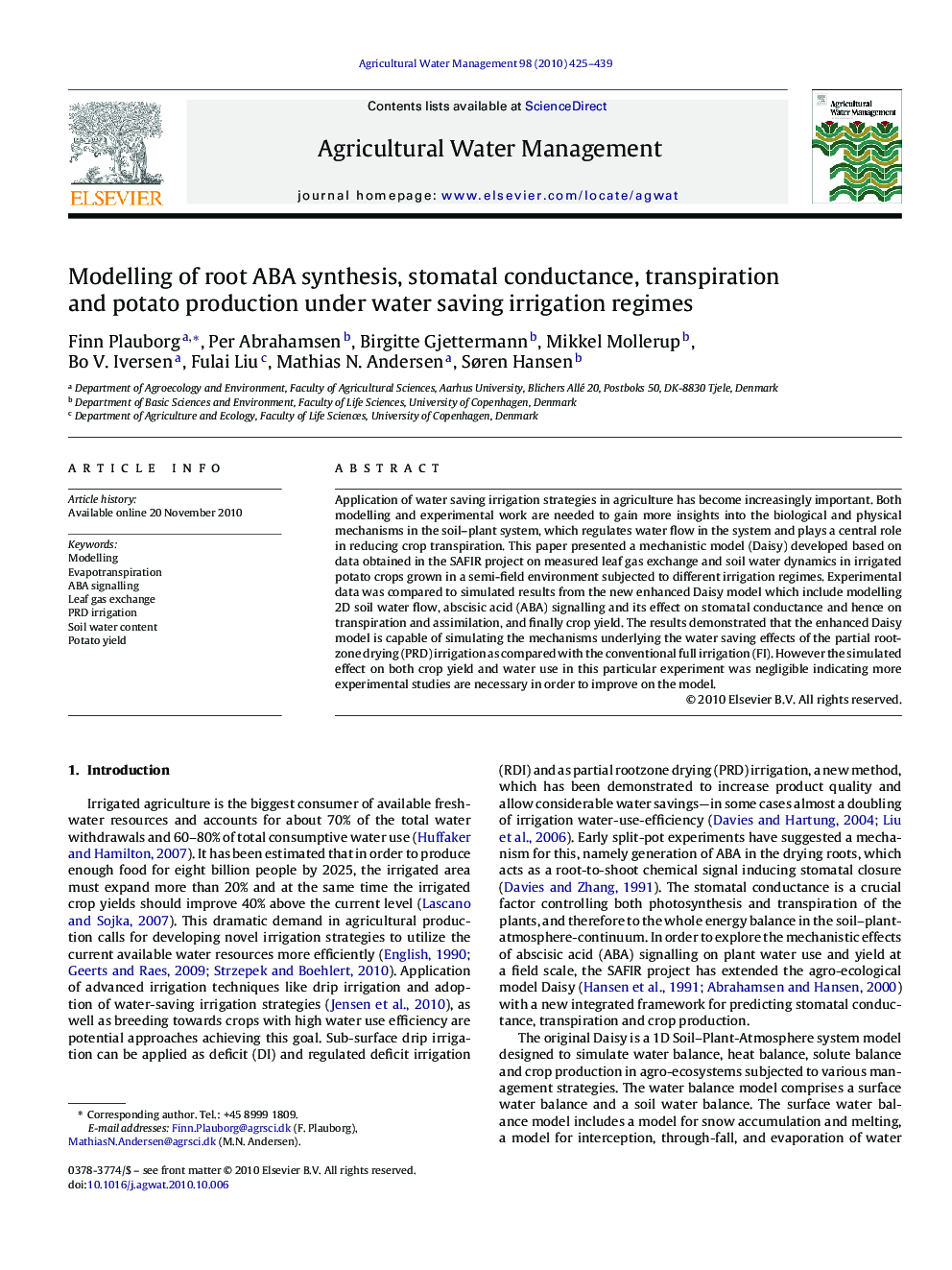| Article ID | Journal | Published Year | Pages | File Type |
|---|---|---|---|---|
| 4479353 | Agricultural Water Management | 2010 | 15 Pages |
Application of water saving irrigation strategies in agriculture has become increasingly important. Both modelling and experimental work are needed to gain more insights into the biological and physical mechanisms in the soil–plant system, which regulates water flow in the system and plays a central role in reducing crop transpiration. This paper presented a mechanistic model (Daisy) developed based on data obtained in the SAFIR project on measured leaf gas exchange and soil water dynamics in irrigated potato crops grown in a semi-field environment subjected to different irrigation regimes. Experimental data was compared to simulated results from the new enhanced Daisy model which include modelling 2D soil water flow, abscisic acid (ABA) signalling and its effect on stomatal conductance and hence on transpiration and assimilation, and finally crop yield. The results demonstrated that the enhanced Daisy model is capable of simulating the mechanisms underlying the water saving effects of the partial root-zone drying (PRD) irrigation as compared with the conventional full irrigation (FI). However the simulated effect on both crop yield and water use in this particular experiment was negligible indicating more experimental studies are necessary in order to improve on the model.
Research highlights▶ The Daisy model is extended with a new SVAT module and 2-D simulation of water, solutes and heat transport in soil. ▶ Xylem-ABA concentration is simulated based on soil grid water uptake and soil water potential. ▶ Stomatal conductance is simulated by a modified Ball-Berry equation including the effect of ABA.
